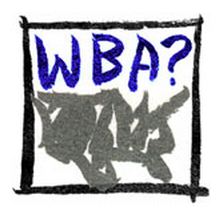
 ASHP recently won a teacher mastery award and funding for Who Built America? Badges for Teaching Disciplinary Literacy in History, from the Digital Media and Learning Competition.
ASHP recently won a teacher mastery award and funding for Who Built America? Badges for Teaching Disciplinary Literacy in History, from the Digital Media and Learning Competition.
The competition is designed “to find and inspire the most innovative uses of new media in support of connected learning … Projects supported by the Competition explore how digital technologies are changing the way people learn and participate in daily life, through interaction with each other in connected, participatory ways, often involving the production and not just the consumption of knowledge, ideas, designs, and artifacts.”
Congratulations to the following:
Leah Potter, American Social History Project
Ellen Noonan, American Social History Project
David Langendoen, Electric Funstuff
Spencer Grey, Electric Funstuff
Jim Diamond, Education Development Center
William Tally, Education Development Center
Developed by American Social History Project (ASHP), the Who Built America? Badges for Teaching Disciplinary Literacy in History program takes proven professional development methods and leverages social media to build professional learning communities and promote subject expertise. It will teach grade 5-12 U.S. history instructors how to design Common Core Standards-aligned instructional materials that give students the high level reading, writing, and thinking skills they need for college and career readiness.
Teachers who successfully complete the badge program will have the credentials of a highly skilled, professionally engaged 21st century history teacher with the proven ability to:
- Design and teach curriculum that supports Common Core Standards in reading and writing in history
- Use technology to foster student inquiry and hands-on learning
- Collaborate effectively with peers as a member of a professional learning community
With its focus on improving students’ literacy in social studies, history, and civics, the WBA? badge system responds to national calls—including the development of the Common Core Standards—for more, and more rigorous reading and writing in the content areas for upper elementary, middle, and high school students. Showing students that so-called “ordinary” people, like themselves and their families, played significant roles in the nation’s history is a powerful way to engage them in the study of the past and teach them critical thinking skills that they will use in the classroom and beyond.
In addition, education researchers have identified professional learning communities, such as the one this badge system will foster, as essential to teacher growth and positive school change. Connecting teachers with peers, whether at their own school or in another state, the WBA online badge system provides motivation, models, and rewards for sharing ideas and constructive feedback.
To earn badges, teachers will work as learners, practitioners, and collaborators. They will learn by completing activities and assessments that model social history inquiry and disciplinary literacy skills, such as reading for understanding, identifying point of view, investigating context, and using evidence to form explanations about the past. Then, they will put their learning into practice when they create and teach classroom activities that address the relevant skill and content knowledge. Throughout, they will collaborate by sharing, tagging, and commenting on their own work and that of their colleagues, and working together to develop and test classroom materials. ASHP will also model the creative use of digital technologies—Smartboard, history-focused videogames, online archives and exhibits—that require students to engage with problems and use evidence to solve them. Learning will take place online and in the classrooms of participating teachers.


